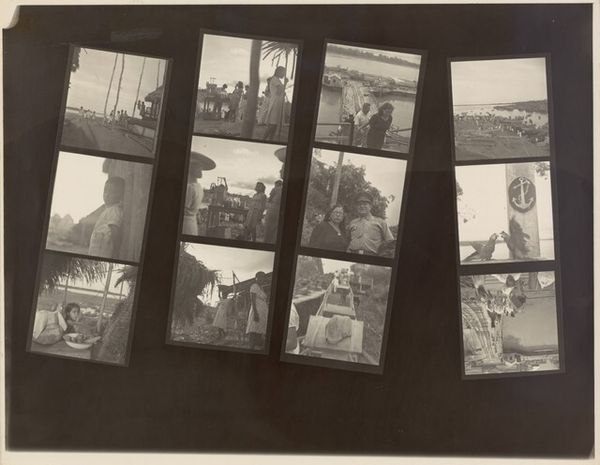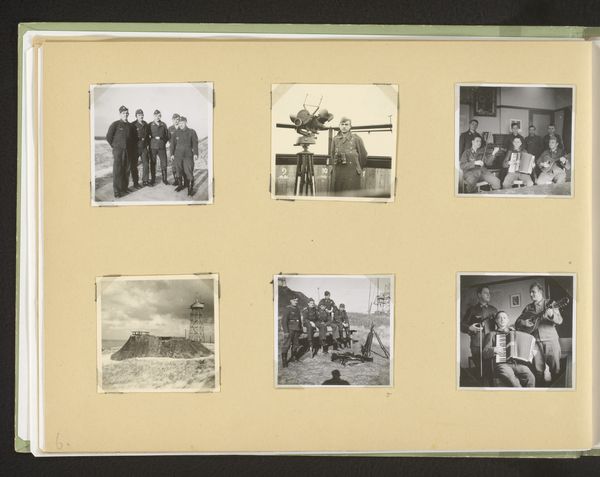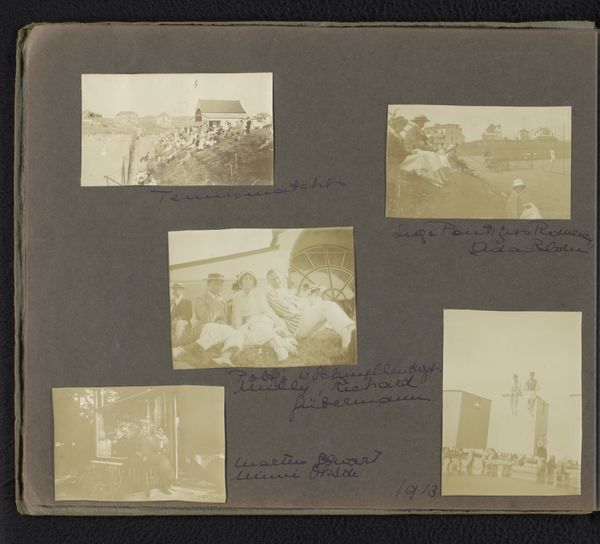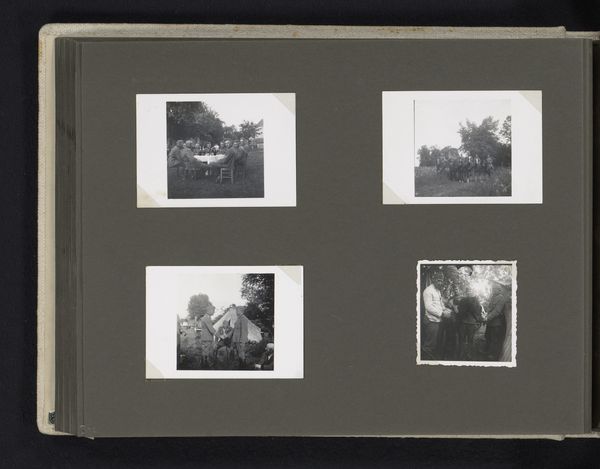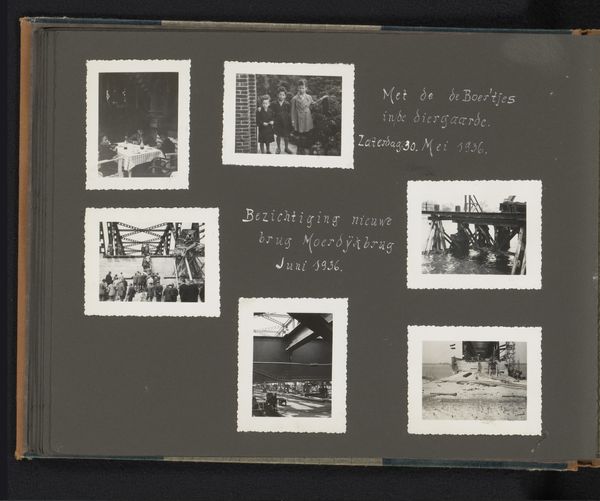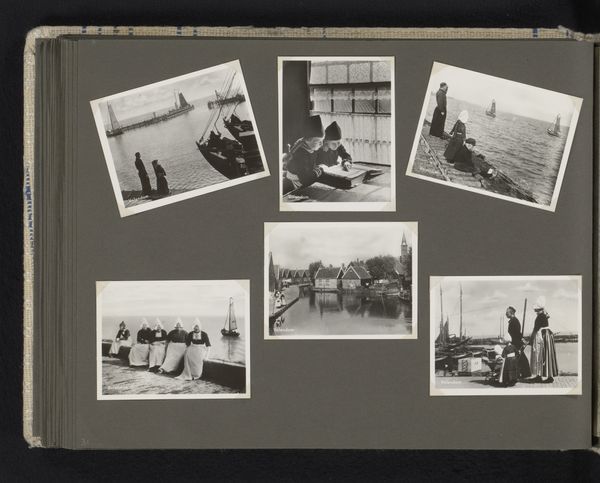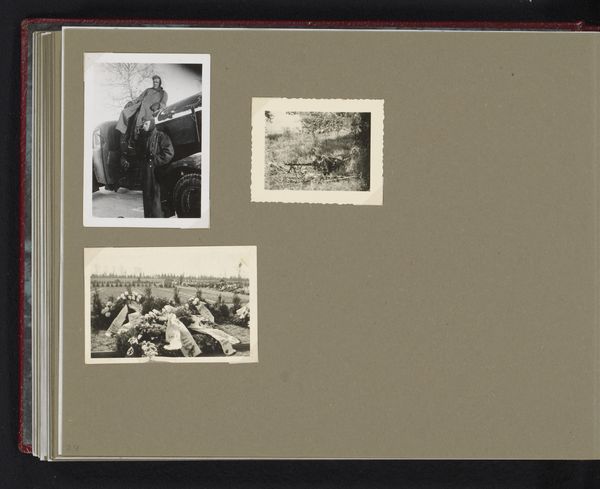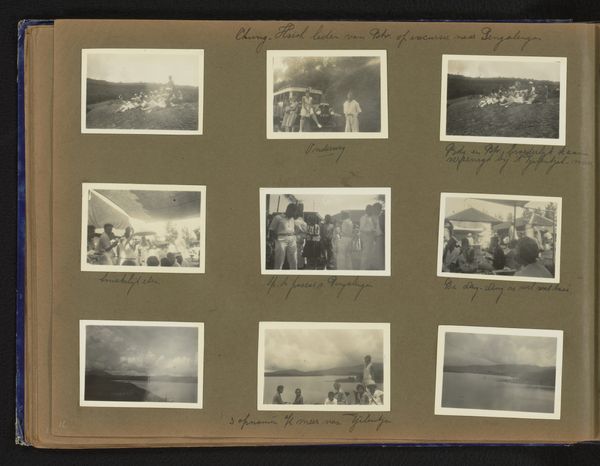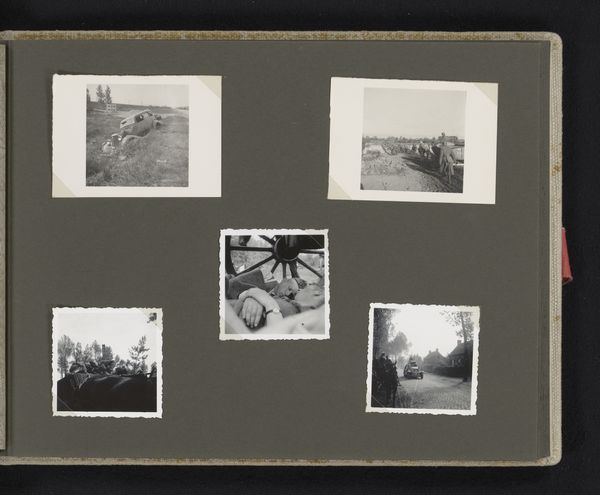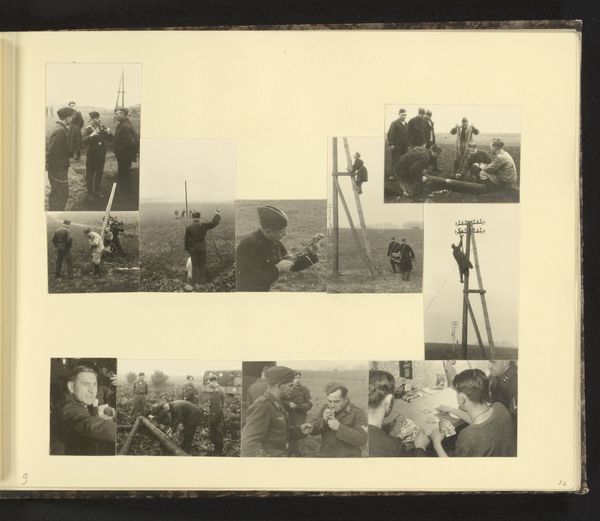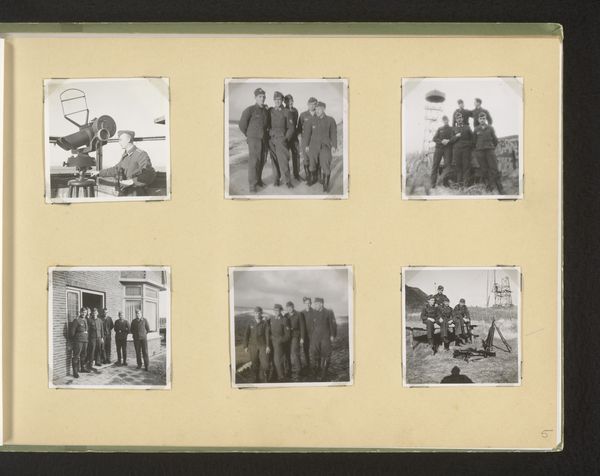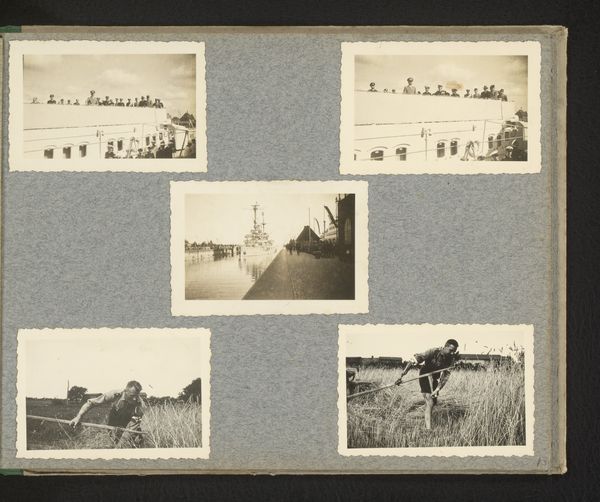
photography, gelatin-silver-print
#
narrative-art
#
photography
#
photojournalism
#
gelatin-silver-print
#
paper medium
#
realism
Dimensions: height 50 mm, width 80 mm, height 230 mm, width 315 mm
Copyright: Rijks Museum: Open Domain
Curator: The piece before us, simply titled "Kabels trekken," or "Pulling Cables" in English, originates from the period of 1942 to 1943. Its authorship remains anonymous, but we do know that this gelatin-silver print offers a fascinating, though unsettling, glimpse into the past. Editor: It has this stark, almost clinical feel to it. Like evidence… Pieces of something bigger, maybe more sinister than we realize at first glance? Curator: Exactly. As a piece of photojournalism presented in a seemingly haphazard collage of imagery, it invites speculation, doesn't it? One sees officials inspecting documents, plumes of smoke, the digging of what I presume are communication trenches. There’s also what looks like detonation equipment, the cables themselves snaking across the terrain. The symbolism, particularly during those years, is hard to ignore. Editor: Let's talk about the medium, this gelatin-silver print, though. It’s really interesting how this process becomes so integral to the creation and preservation of historical narratives. It freezes a specific reality within the social context, particularly when the photographer’s intention seems geared toward objectivity or simply the recording of everyday labor and processes that facilitated that period of conflict. But "anonymous," why the veil of secrecy? Was it that the maker wished to avoid something nefarious being attributed to them? Or perhaps just remove themselves as a presence from such potent circumstances? Curator: The anonymous authorship throws a haunting wrench into interpretation. There's an intentional distancing—perhaps fear, or even the hope for impartiality. What does remain tangible is the record of labor… the physical act of 'pulling cables,' constructing these pathways of information, whatever nefarious schemes that was supposed to fuel. Editor: It makes you think about what goes into wartime logistics beyond the heroic battles depicted in propaganda, you know? How the unacknowledged labor of many fueled the efforts and ultimately becomes entangled with outcomes and consequences they didn't initiate. You begin to notice these materials like dirt, wire, fuel that is consumed and often buried along with people in wartime conflicts that has a cost that keeps being carried and borne, both material and figurative... It adds layers to something one might have missed when judging with an eye simply looking for information. Curator: Indeed. A meditation on process, yes, but also, a spectral whisper from an artist shrouded in mystery, compelled, I imagine, to etch something—no matter how abstract—of that time in memory, if for no other reason than it was something he, or she, felt deeply compelled to produce and to see.
Comments
No comments
Be the first to comment and join the conversation on the ultimate creative platform.
